This Gift Guide for fermenters has the right tools and accessories to guarantee success on her next fermentation project. These 10 areas offer the cultures, tools, and fermentation guides that ensure that the fermenter on your gift list, has the success they deserve, as they master fermentation techniques at home. If they also like wildcrafting, check out this list of gifts for foragers.
Crunchie mommas know that the microbiome is an integral part of our health and our immune system. Even our concentration and our emotions are dependent on a healthy microbiome. Doctors and mommas agree that a healthy microbiome is best supported by eating something fermented at every meal and actively fermenting food in your own home. This charges the air with healthy microbes that infuse our own bodies with strength and health as we breathe and move through our home. But daily fermenting calls for some specialized equipment that needs to be collected over time, little by little. Birthdays, anniversaries, and Christmas are ideal times to give fermentation gifts to your crunchy momma.
Whether you are shopping for a house warming gift, a wedding, a birthday, an anniversary, or Christmas, this gift guide for fermenters will give you inspiration in picking the ideal gift for the crunchy momma who loves to ferment.
I suggest picking just one area of fermentation and stocking up with cultures and the equipment necessary for a successful ferment in that one area before moving on to other areas of fermentation. For instance, if kombucha culture is this year’s theme, get the scoby culture, the book Kombucha Revolution, swing-top bottles for the second fermentation, and the fermentation vat with lid, or Mason jars with special kombucha lids. Package it in a beautiful basket or box, along with a box of black tea and a small bag of organic sugar. Your crunchy momma will have everything necessary for successful kombucha brewing at home right away.
Cultures for gift-giving
The lactobacterial starter culture is the foundation of successful fermenting. Most successful fermentation projects begin with a starter culture. The basis of fermentation is specific lacto-bacterial cultures that give the correct bacteria for various fermenting projects. While some good bacteria are already available on the food you plan to ferment, like pickles or sauerkraut, for instance, other ferments must get their start from a culture. Once the culture is working though, the ferment can be maintained by regular feeding, as in the case of sourdough or kombucha.
When deciding which cultures would be best, consider what new projects your crunchy momma has on her list for the coming months.
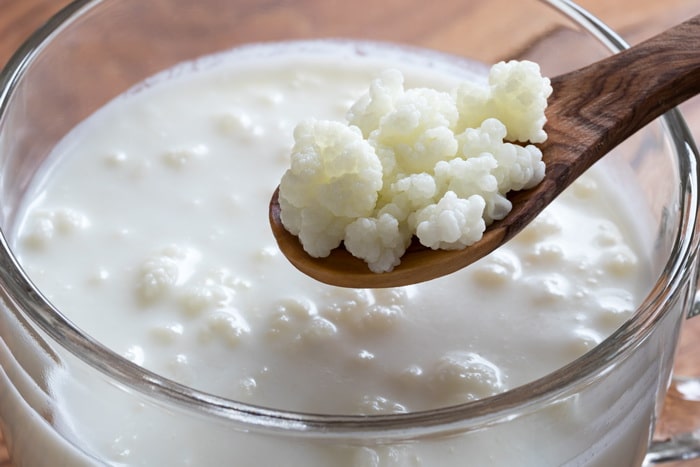
1. Milk and water kefir grains
Some Kefir grains can be cultured with either milk or water. Once the culture is activated, however, you’ll need to stick with one type of culture.
Milk kefir grains are necessary to ferment milk into kefir, a fizzy probiotic milk-based drink. Kefir is fermented at room temperature so other than a culture and a fermentation jar or bottle there is no other special equipment necessary for fermenting kefir.
Water kefir grains use sugar and water for their ferment. Like milk kefir, they produce a fizzy probiotic drink and ferment without specialized equipment. Swing top bottles are helpful for water kefir to create fizzy ferments that act like soda.
Kefir is generally fermented in a wide mouth Mason jar at room temperature. A special lid like this on from Mason tops, allows the kefir grains to be strained out easily without handling which can increase the risk of contamination.
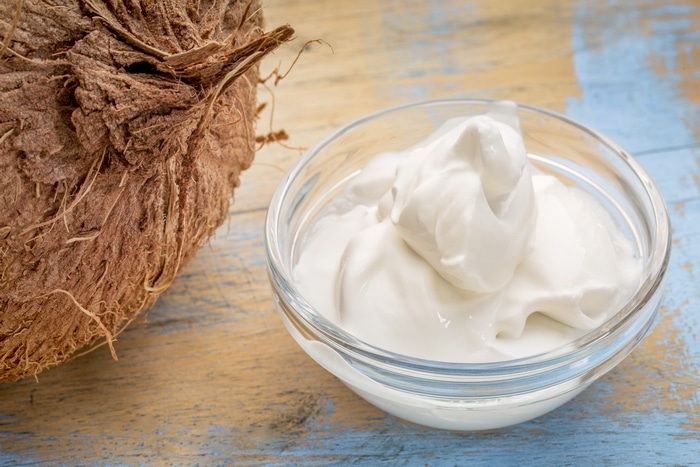
2. Yogurt cultures
There are a variety of traditional yogurt cultures to choose from based on their origins. They have different levels of acidity and can make the milk more sour or less sour. They also vary in how much the milk thickens during fermentation. Yogurt needs a specific temperature for optimal colonization of the vat, and the cultures are temperature sensitive and temperature specific. They are divided into two main groups: Thermophilic or heat-loving cultures and Mesophilic or moderate temperature cultures. An ideal temperature can be maintained using a yogurt maker or an Instant Pot with a yogurt setting for thermophilic cultures. Mesophilic cultures can be incubated at room temperature on a kitchen counter — no yogurt maker required.
Once you have a working yogurt culture you can maintain your culture and use it for making batch after batch, provided that it is well cared for.
Bulgarian Yogurt has a mild flavor, with a thicker consistency. It is thermophilic (heat-loving) and requires a consistent heat to activate the culture. It benefits from the use of a yogurt maker.
Greek Yogurt is slightly tangy, with a thicker consistency. It is thermophilic (heat-loving) and requires a consistent heat to activate the culture. It benefits from the use of a yogurt maker.
FILMJÖLK has a cheesy flavor and a thick, custard-like consistency. It is mesophilic and can be cultured in a warm room, without the use of specialized equipment.
VIILI has a mild flavor with a thick, jelly-like consistency. It is mesophilic and can be cultured in a warm room, without specialized equipment.
These are just a few of the many yogurt cultures available today. The key points to understand, are whether the culture is thermophilic or mesophilic, so you know whether the culture needs the use of any other specialized equipment for success.
Besides the yogurt culture, a yogurt fermentation project requires Mason Jars and milk. A yogurt maker or Instant pot with a yogurt setting is beneficial for thermophilic yogurt cultures.

3. Gift guide for fermenters would not be complete without a Kombucha Scoby
Kombucha is fermented from sweetened tea using a culture that is similar to making cider vinegar, although the two are not interchangeable. To make Kombucha you’ll need a vacuum sealed, live kombucha culture with a scoby. Once she gets the scoby started your crunchy momma will be able to maintain the culture with weekly feedings of sweet tea, for a perpetual, lifetime, source of kombucha.
In order to maintain a family supply of kombucha, your crunchy momma will also need a fermenting vessel that is at least 1 quart to 2 quarts size along with a lid that allows oxygen into the brew but prevents fruit flies and bugs from getting to the vat. When brewing in a wide mouth Mason jar, these lids from Masontops are ideal to protect the kombucha vat from flies while allowing oxygen into the ferment.
For a continuous brew system a fermentation vessel that is 2 to 2 1/2 gallons with a lid, is beneficial. No other equipment is essential for Kombucha fermentation. But for fizzy second ferment kombucha, swing-top bottles are necessary to hold in the fizz.
You’ll also need tea for making kombucha. Choose any organic green or black tea to get started. This is a blend of green and black organic teas that are recommended for Kombucha’s success.
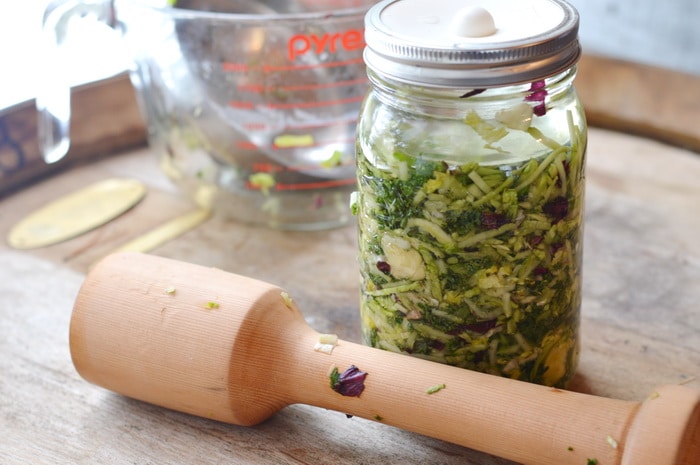
4. Lacto-fermented Vegetable starter cultures and essential tools
While many vegetable ferments don’t need additional cultures to work well, since the correct lacto-bacteria is already on the vegetables, when someone is just starting out in fermentation, it can be helpful to inoculate the first few batches with the correct bacteria, especially if there have been some failed lacto-fermented batches in the past. Having the correct starter culture can ensure a good beginning to a long career in fermented vegetables.
Freeze dried starter cultures are also necessary for low salt or salt-free vegetable ferments. The salt in a vegetable ferment slows down the proliferation of bad bacteria in a batch in order to allow the slower starting beneficial microbes a chance to take hold. With low salt or no salt fermentation, the starter cultures give the beneficial microbes a boost enabling them to colonize the vat faster than the bad bacteria can take over.
To be successful in fermenting vegetables like sauerkraut or pickles your fermenter needs Mason jars with weights and airlocks OR a larger fermentation vat. Himalayan salt and a kraut powder are also essential for successful vegetable fermentation.
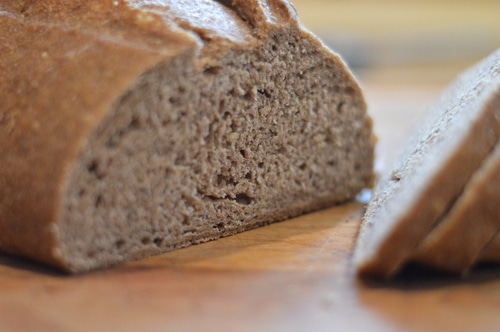
5. Gift guide for fermenters includes sourdough fermentation
Sourdough gets its sour flavor, not from yeast but from lacto-bacteria. Different locales become famous for the flavors of their authentic sourdough. Think of San Francisco sourdough, so famous that you can buy loaves of this authentic bread at the San Francisco airport. This locale-specific flavor comes from the specific combination of lacto-bacteria present in the environment. Like yogurt, once the sourdough culture is started, it can be used over and over again to make sourdough bread, without the addition of fresh culture.
Start your crunchy mamma with a sourdough culture of known provenance that will bring back memories of bread that she’s enjoyed in the past. Many sourdough cultures today come from well-maintained vats that are more than 100 years old. For a complete list of exotic sourdoughs sourced from around the world check out the sourdough cultures available from Ed Wood’s Sourdoughs international.

In addition to the sourdough culture, your crunchy momma will need a crock or Mason Jar to hold the sourdough, as well as a banneton proofing basket for proofing the dough and a bread stone or pizza stone to maintain the oven heat for that coveted “rise” and a chewy sourdough crust. Special artisan bread pans that maintain an even heat can fill out a gift of sourdough.
Fermentation Jars and Crocks for gift-giving
Once you have a culture you’ll need a vessel to ferment into. What kind of jar or crock you need depends on the type of fermentation project your crunchy momma has on her list. The type of fermentation project will determine whether she needs a vessel with a fermentation lock, a regular lid, or a specialized receptacle. In this section, we’ll look at each project separately and show you the type of equipment that is needed.
6. Mason jars and lids are musts for fermentation gifts and stocking stuffers
Many fermentation projects begin in Mason jars. Wide mouth jars are best for fermentation projects because they are easy to clean. These are dishwasher safe, heat-safe, and can be easily sterilized. A wide variety of lids are available for Wide Mouth Mason jars and many of these available lids are suitable for fermentation.
Silicone fermentation locks and glass weights are must-have tools for vegetable ferments. Try these sets from Masontops that include both glass weights and silicone fermentation locks. These same fermentation locks are suitable for any kind of ferment where the contents need to be protected from air, such as yogurt, and sourdough. Kombucha, on the other hand, needs oxygen to thrive so no fermentation lock is necessary when brewing kombucha.
Instead, kombucha needs to be protected from flies and dust while allowing oxygen into the vessel. Mason tops make a special kombucha lid for wide mouth jars that does the trick.
Fermentation weights are essential when fermenting vegetables and keeping the veggies under the brine to prevent mold. There are two options: glass weights and stainless steel springs. Glass weights are adequate provided that the jar is not shifted or moved around during the fermentation process. The spring fermentation weights come as a system with air lock fermentation lid and spring that weighs the vegetables under the brine, while it adjusts to the volume of vegetables in the jar. This system is more failure proof because it adjusts incrementally to variation in volume and movement.

7. In this gift guide for fermenters you’ll find jugs and crocks for large batch fermentation
While many crunchy moms now prefer small-batch fermentation, larger crocks are available for larger projects. Expect to pay more for these specialized crocks. They are both heavier, sturdier, and have specialized features that make them more efficient for regular fermentation. For instance, the SAUERKROCK Fermentation Crock has a water moat in the lid that seals out air and contaminants to minimize mold during the fermentation process. With weights and a lid customized to the vessel, it is ideal for those who ferment regularly in larger batches. This German-style fermenting crock comes in a 2 quart and 5-quart size.
Since fermentation is acidic, choose glass or ceramic vessels for fermentation. The acidic nature of fermentation can leach endocrine disruptors from plastic vessels leading to dangerous byproducts.
8. Gift Guide for Fermenters also includes useful tools to make it easier
Sauerkraut pounders and tampers are useful to break the cellulose tissue of cabbage to make fermentation easier and faster. You can make your own, if you are handy with a wood lathe, using these step by step project plans.
Or you can pick one up for your crunchy momma. This is the style I recommend.
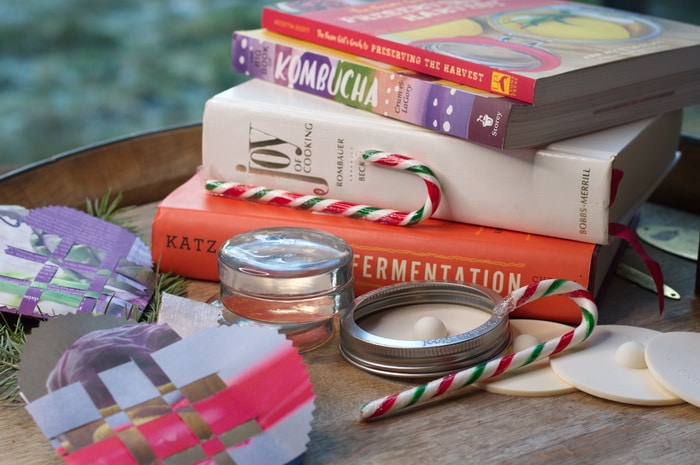
9. Inspiring books for your crunchy momma on fermentation techniques
The Joy of Cooking by
This is an indispensable classic cookbook first published in 1931 and updated several times. It has basic fermentation techniques used around the world to preserve food without refrigeration. It includes gluten-free bread, sourdough, and vegan cooking along with basic cooking techniques. Everyone should have this 1200 page reference in their kitchen.
Classic Sourdoughs, Revised: A Home Baker’s Handbook by Ed and Jean Wood
The science and history behind several sourdoughs and a step by step tested technique for getting the best sourdough bread from different flours and different cultures. This is the nitty-gritty sourdough compendium by a world expert in sourdough culture.
Wild Fermentation: The Flavor, Nutrition, and Craft of Live-Culture Foods, by Sandor Ellix Katz
Philosophy and essential techniques of fermentation around the world. This is the shorter version of his compendium of fermentation: The Art of Fermentation. This one is less detailed and more accessible.
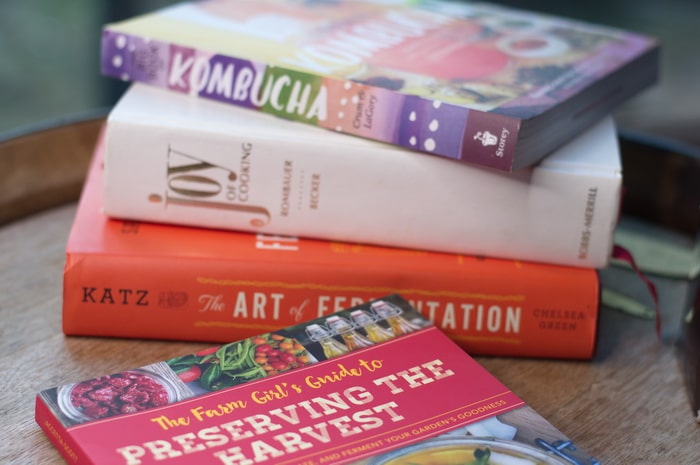
The Big Book of Kombucha: Brewing, Flavoring, and Enjoying the Health Benefits of Fermented Tea by Hannah Crum
This is an all-round guide on brewing Kombucha and using it. With over 400 recipes and flavor combinations to try, this book belongs on every kombucha lover’s shelf. This book includes in-depth brewing techniques, recipes, and ideas to inspire every aspect of kombucha brewing. There’s ample information for troubleshooting kombucha batches that go wrong, plus answers to questions you didn’t even know to ask.
The Farm Girl’s Guide to Preserving the Harvest: How to Can, Freeze, Dehydrate, and Ferment Your Garden’s Goodness by Ann Accetta-Scott
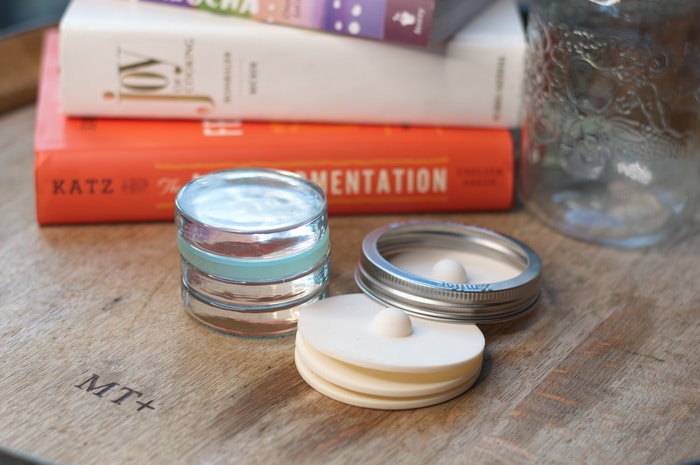
10. The Craft of Herbal Fermentation Course with the Herbal Academy
This short online course by the Herbal Academy leads the fermenter to discover the excitement and liberation that comes from creating herbal fermentations including herbal beer, herbal mead, herbal kombucha, herbal water kefir, and herbal lacto-fermented foods through both written instruction and video tutorials. It includes exclusive recipes and techniques for the beginning and intermediate herbal fermenter and brewer. Learn more here.
This gift guide for fermenters can help you find the ideal gift for the fermenter in your life, ensuring her success with the next fermentation project she takes on, and the one after that, and the one after that.
Your turn:
Are you a fermenter? What item for fermenting is on your wish list this year? Did I miss an important item on my Gift Guide for Fermenters?


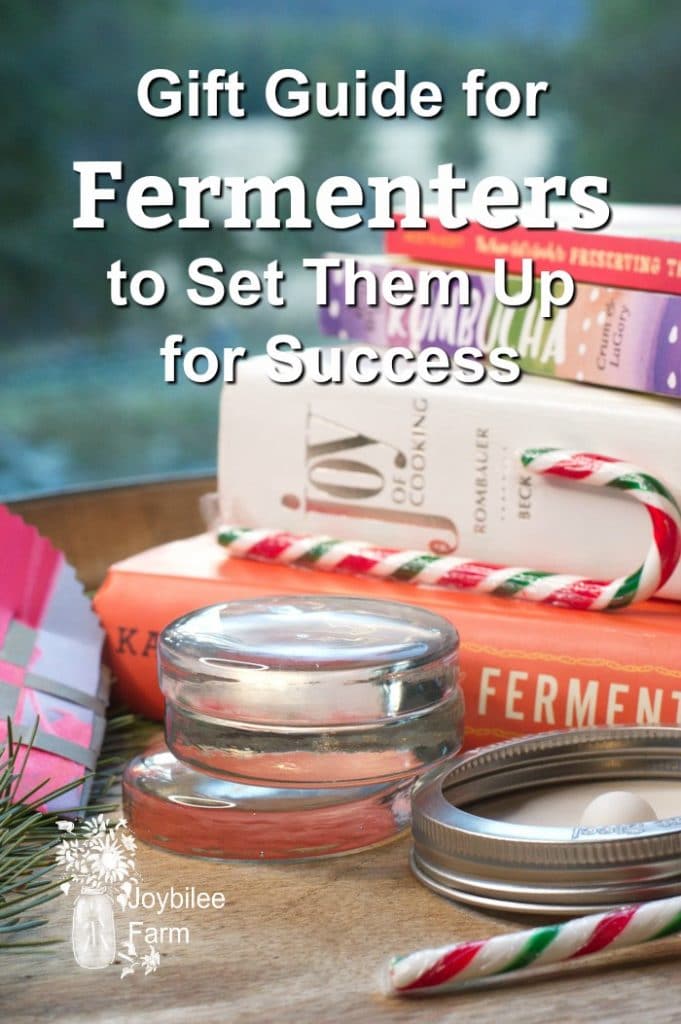
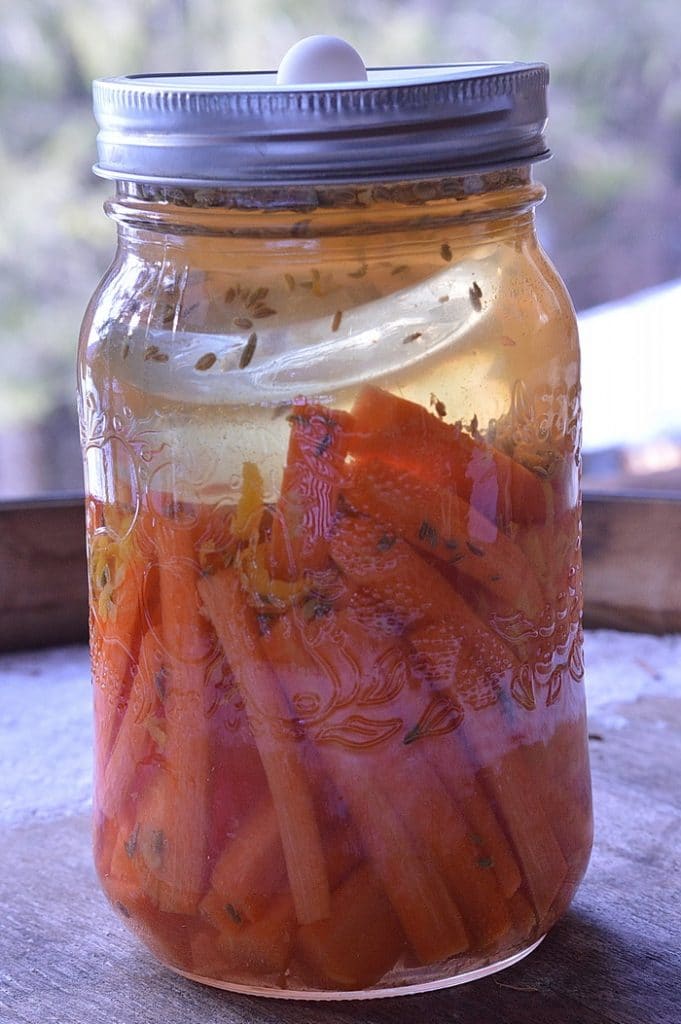
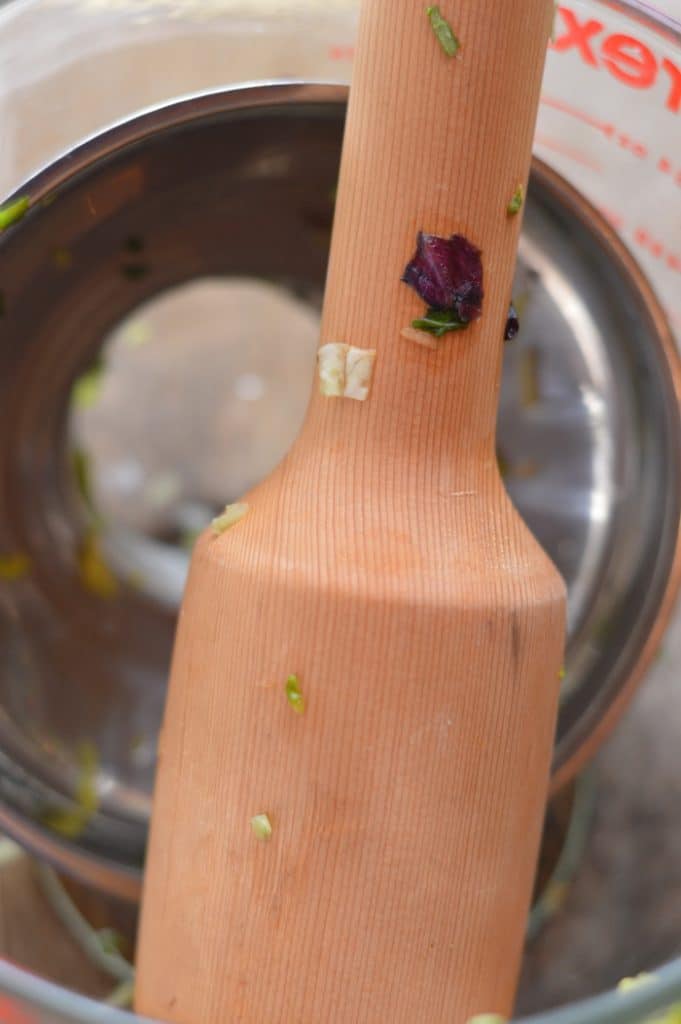



Leave a Reply